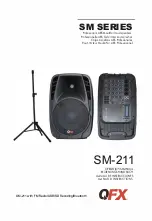
15
English
Power and acoustic pressure
Power and acoustic pressure
How loud a speaker is able to play and still sound good is completely
dependent on the signal it has to reproduce. So, in practice, you cannot
defi ne an unequivocal level for use in comparing different speakers.
Obviously, lots of pure, undistorted output
from a large amplifi er is better than a dis-
torted signal from a small amplifi er stretched
beyond its capacity. The signal from a dis-
torting (clipping) amplifi er contains much
more high-frequency information than an
undistorted signal, and therefore puts a
heavy strain on the treble unit. Consequently,
speakers are most often damaged by small
amplifi ers having to work too hard - and very
rarely by large amplifi ers, which are practically
running idle.
It is worth noting that when the tone controls
are turned above the neutral setting this sig-
nifi cantly burdens both speakers and amplifi er.
On a good sound system tone controls should
only be used to compensate for poor record-
ings and not to permanently compensate for
weaknesses elsewhere in the system. So, DALI
recommends that the tone controls generally
be set to the neutral position, and you achieve
your desired sound image through correct
positioning of the speakers.
Ensuring that you keep the volume low enough so the sound remains clear
and undistorted will minimise the strain on both speakers and amplifi er.
Always use the supplied spikes for fl oor standing speakers.
Summary of Contents for SUITE
Page 1: ...MANUAL www dali dk ...




































